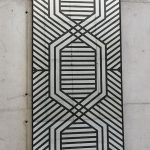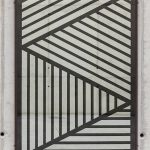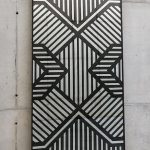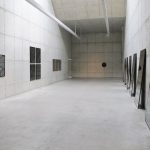Galeria Leme presents, Ronda Noturna (Night Watch), Paulo Climachauska’s first solo exhibition in the gallery, since he started being representated by Galeria Leme two years ago.
Paulo Climachauska’s works of are deeply rooted in his fascination with the interrelationships between economy, society and art, examining the idea of art as a socioeconomic element and its association with the abstraction of capital and its financial derivatives. The artist always addresses this issue with a ‘double meaning’, using and subverting icons that are already saturated by the collective imagination as levers to question established forms of interpretation. Be it redesigning the world through the systematic and repetitive action of mathematical subtractions, or using known figures of the gambling and speculation environments, the artist moves freely through the fields of economics, sociology and history. In fact, the evolution of Climachauka’s works can be largely attributed to the way he rethinks, reconsiders and deconstructs principles deeply rooted to an ideological apparatus that aims to discredit speeches refuting the status quo.
In Ronda Noturna (Night Watch), Climachauska presents a new series of 18 works. The title of the exhibition and homonymous series, use the name of one of the most famous masterpieces of the Dutch painter Rembrandt, painted between 1640 and 1642, whose title in Dutch, De Nachtwacht, is translated into Portuguese as Ronda Noturna. On this painting of monumental dimensions we can see a militia of Amsterdam which is preparing to make a monitoring round of the city.
Departing from this iconic scene and using materials such as reinforced glass, mirrors covered with darkening film that inhibits the vision for car interiors and spaces, and composing geometric patterns that recall the many gates and bars of the city of São Paulo, Climachauska composes an exhibition that questions the paranoia of security, surveillance and contemporary control devices. Pointing simultaneously to the major split between public and private spaces in Brazilian society due to its great economic apartheid.
About the artist:
Paulo Climachauska. Sao Paulo, Brazil, 1962. Lives and works in São Paulo.
Holding a degree in History and Archaeology from the University of São Paulo, Climachauska had his first exhibition in 1991 at the Contemporary Art Museum of the University of São Paulo. After his participation at the 26th Bienal de São Paulo, in the 8th Biennial of Cuenca, and the 14th Biennial of San Juan, his works have been featured in solo exhibitions at the Moderna Musset (Stockholm, Sweden), Oi Futuro Flamengo (Rio de Janeiro, Brazil), the Project 01 (Park Gauflstrafle, Germany) and Imperial Palace (Rio de Janeiro, Brazil), among others.
He also participated in group exhibitions at the Museum of Brazilian Sculpture (São Paulo), Chateau de Fermelmont (Fermelmont, Belgium) Vancouver Biennale (Vancouver, Canada), Fundación Pedro de la Maza Barrié (Vigo, Spain), Henry Moore Institute (Leeds, England), and the Toyota Contemporary Art Museum (Tokyo, Japan), among others. His work is present in collections such as: Pinacoteca do Estado de Sao Paulo, Modern Art Museum of São Paulo, Itaú Cultural Institute, Museum of Modern Art in Rio de Janeiro, Fondation Cartier pour l’Art Contemporain, and Lhoist Collection Colección Patricia Phelps de Cisneros.






















